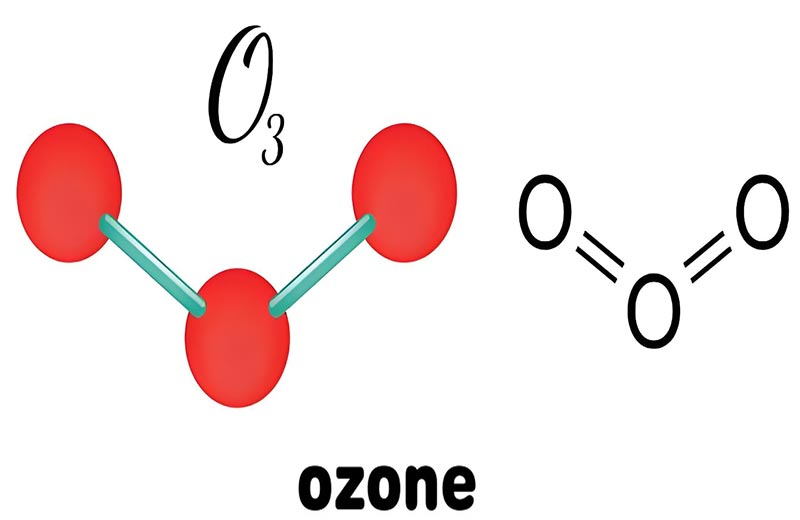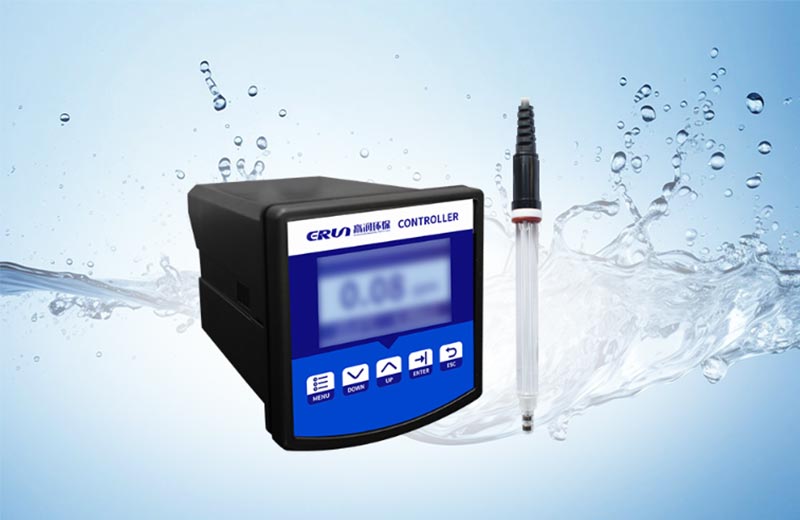As a strong oxidizing agent, ozone is widely used in water treatment for sterilization, disinfection and odor removal.However, high or low levels of ozone can have adverse effects on water quality, so it is critical to accurately test for ozone in water.This article will detail the application of ozone detection in water and its importance in different fields.

Ozone in water can be detected using a variety of methods, here are a few common and practical ones:
Colorimetric method: Determination of ozone concentration based on the extent to which ozone reacts with dihexyl-p-phenylenediamine (DPD) for color development or indigo dye for decolorization. This method is portable, easy to carry, fast and sensitive, but it should be noted that excessive iron and copper ions in the water will interfere with the final test results.
UV Spectrophotometry: Quantitative detection by UV spectrophotometer using the characteristic absorption of ozone into UV light at 254 nm. This method is easy to operate and has a fast response, but it is necessary to avoid interference from other substances.
Iodometric method (potassium iodide-DPD method): In the presence of potassium iodide, ozone reacts with the DPD reagent to give a red color to the sample solution, with the depth of color development proportional to the concentration of ozone in the sample solution. This method can be used in laboratories, field surveys and daily rapid on-site water sample determination.
Electrochemical methods: Use of electrodes to measure current or potential to determine ozone concentration. This method is highly accurate, but may require complex instrumentation and a high level of skill to operate.
Spectroscopic method: Based on the absorption properties of ozone for light of specific wavelengths, the concentration of ozone is calculated by measuring the change in the transmittance or absorbance of light. This method is sensitive and accurate, but again requires sophisticated instrumentation and a high level of technical skill.
Drinking water treatment: Ozone is widely used in waterworks as a strong oxidizing agent to remove organic contaminants, bacteria, viruses and other microorganisms from water.The Water Ozone Tester is capable of monitoring ozone delivery and residual levels in real time to ensure safe water quality.Through the monitoring of the ozone detector, the dosage of ozone can be adjusted in time to ensure that the content of ozone in drinking water is within the safe range.
Wastewater treatment: Ozone is often used to degrade pollutants in industrial and municipal wastewater treatment. Ozone detectors can be used to monitor the efficiency of ozone use and ensure that the treatment meets environmental standards.
Food processing and beverage industry: Ozone is used to sterilize and clean water used in food processing and water used in beverage production.The water quality ozone tester allows you to monitor the ozone concentration in the water to ensure compliance with hygiene standards.
Cooling tower water treatment: the recycling of water in industrial cooling towers needs to prevent microbial growth and water pollution, ozone is an effective disinfectant. Detectors are used here to monitor ozone levels in order to optimize the water treatment process.
Laboratory Research: Ozone detectors are commonly used in scientific research to help researchers monitor the degradation of ozone in water bodies and its effectiveness in treating various pollutants.

Water quality monitoring: Ozone in water analyzers can monitor ozone concentration in drinking water in real time to ensure that the water quality meets the relevant national or regional standards. In the event of water quality problems, it can be detected in time and take appropriate measures to ensure the safety of water supply.
Water source protection: Ozone analyzers in water can be used to monitor the water quality of water sources, helping to identify sources of pollution and take timely protective measures to safeguard the safety of drinking water sources.
Early warning system: An early warning system for drinking water supply systems can be realized by installing ozone analyzers in water. When the ozone concentration in the water is abnormal, the early warning system is activated immediately, thus ensuring the safety of the water supply and preventing potential health risks.
Data Recording and Analysis: Ozone analyzer in water can record and analyze water quality data in real time, helping water supply companies to better understand the water quality status and trends. By analyzing the data, potential water quality problems can be detected and solved in time.
Ozone testing in water plays a key role in ensuring that water is disinfected, purified and meets various standards. With the continuous development of science and technology, ozone detection in water technology will continue to progress, to protect the safety of people's drinking water.At the same time, the improvement of water quality requirements in different fields will also promote the wide application and development of ozone detection technology in water.